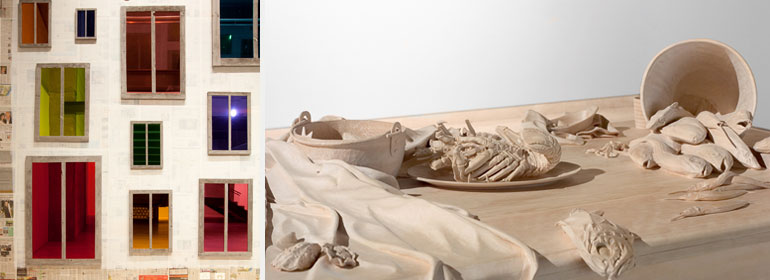
(left) Ugo Rondinone, clockwork for oracles 2011. John Kaldor Family Collection at the Art Gallery of NSW © Ugo Rondinone (right) Ricky Swallow, Killing time 2003-04. Rudy Komon Memorial Fund and the Contemporary Collection Benefactors 2004, Art Gallery of NSW collection © Ricky Swallow, courtesy Darren Knight Gallery
Back to the future
The single defining feature of contemporary art practice is that it resists easy characterisation. No longer restricted to working in either traditional genres or the mediums commonly associated with them, contemporary artists actively seek out new materials and methods and work across a range of styles. Enabled by new technologies, artists are able to move across global boundaries and ignore or combine historical traditions as they choose.
However, even as contemporary artists react to developments in society and technology, they are still influenced by the movements and ideas preceded them. Swiss artist Ugo Rondinone, for example, often references art history in his wide-ranging works. In what do you want? 2002 and clockwork for oracles 2011 he evokes a dadaist sense of disconnection and nihilism.
Ricky Swallow’s Killing time 2003-04, on the other hand, references the 17th-century Dutch still-life tradition, with its allegories of life and death. However, the work is also deeply personal, as the table he has carved duplicates his family’s own and the sea creatures depicted are all ones he – the son of a fisherman – has caught and killed.